A look at four psychology fads

Now and then, a new psychology movement bursts onto the popular scene and shakes up the mental health establishment. Typically these efforts tickle the fringe of accepted science, buoyed by celebrities and alternative therapy enthusiasts -- which is to say, they often settle in California. Some, like est or primal therapy, traffic in mental transformation. Others, like Transcendental Meditation, whisper of ancient wisdom. Still others, like lucid dreaming, have echoes of science fiction. While the extent of their legacies varies, these four movements have all stood the test of time. So where are they now?
Est
In 1971, a former door-to-door encyclopedia salesman named Werner Erhard (born John Paul Rosenberg) launched Erhard Seminars Training, or est, in San Francisco. Promising direction, empowerment and enlightenment, the seminars challenged people to throw away their old belief systems and embrace the beauty of the present moment. This breakthrough, once achieved, was known as getting "it" — the term "est" is also Latin for "it is" — and those who got "it," according to Erhard's program, would also get control of their lives.
Gaining this new outlook wasn't easy: est training lasted 60-plus hours over two consecutive weekends, and the sessions were led by authoritarian instructors whose mission, Psychology Today reported in 1975, was to "tear you down and put you back together." As a result, a strict set of rules was enforced. A single day's training, for instance, could last 15 hours with just two breaks. With up to 250 participants attending the seminars at one time, est looked to some media watchers like a form of mass mind control.
But a host of cultural heavyweights championed the program — at one point a former chancellor of UC San Francisco chaired its advisory board — and by 1977 Erhard and his self-transformation empire were big enough to be parodied in the Burt Reynolds film "Semi-Tough." At that time, about 3,000 people were completing the training each month. Many found the help they sought. An evaluation of 67 patients who took est, published in 1978 in the American Journal of Psychiatry, reported therapeutic benefits for those "with good ego strength who are motivated to change." Despite the tough training, hundreds of thousands of people flocked to est during its two-decade run.
The old salesman didn't sell everyone, however, with many mental health professionals cautioning that est harmed more people than it helped. A series of case reports, published in the same journal in 1977, described seven people who developed psychotic symptoms — including grandiosity, paranoia, mood swings and delusions — after partaking in est. (The authors stopped short of saying that est caused the breakdowns, but their implication was clear.) Several years later, after the death of an est participant who collapsed during training, UC Berkeley psychologist Margaret Singer reviewed the program and said in a sworn statement that was part of a civil lawsuit that est indeed caused its participants "emotional distress" and also created a "high probability of psychological and physiological harm."
"People detached from their own identity and became part of this est thing," says Steve Salerno, who examined est for his 2005 book, "Sham: How the Self-Help Movement Made America Helpless." "People will claim that est worked for them, but you have to wonder at what cost."
In 1991, Erhard left the country and sold his intellectual property to Landmark Education, run by his brother Harry Rosenberg. Today Landmark offers a variety of programs, chiefly the Landmark Forum, based largely on Erhard's ideas. The training has evolved — gone is the est-era combativeness of instructors — but it remains wildly popular: Tuition varies by location and costs $495 in California. Landmark reports that 200,000 people worldwide take its courses each year.
Primal therapy
Psychologist Arthur Janov introduced the general public to primal therapy in his 1970 book, "The Primal Scream." The idea behind the treatment is that psychological problems emerge from the repression of early traumas — even those experienced during childbirth. These "primal pains" could be purged only by reliving them and allowing the latent tensions to be released during therapeutic sessions that often left patients screaming and writhing on the floor of the Primal Institute in Los Angeles.
Janov's approach received a huge shot of publicity in 1970 when John Lennon underwent several months of primal therapy before recording "John Lennon/Plastic Ono Band," which he later described as "sort of a 'Primal' album." Lennon publicly praised the therapy, telling Rolling Stone that "you are so astounded with what you find out about yourself." Based on his own success with patients, Janov published claims that primal therapy relieved not only psychological maladies but also a range of physiological ailments, including high blood pressure, asthma, ulcers and migraines.
However, research psychologists have routinely questioned the treatment's scientific foundation. A major flaw with the treatment, critics say, is that studies have cast doubt on the existence of deeply repressed memories, which primal patients must unearth to ease their suffering. The latest developmental science suggests that babies aren't able to form memories until they're about 8 months old and don't develop long-term memories until roughly age 5. That renders primal theory "frankly implausible," according to the 1999 book "Controversies in Psychotherapy and Counselling," edited by Colin Feltham, a counseling expert at Sheffield Hallam University in England. A survey of 101 mental health experts, published in a 2006 issue of Professional Psychology: Research and Practice, rated primal therapy as a "certainly discredited" therapy.
"The problem with reliance on this concept of repressed memory is that it increases the risk that someone might form a false memory," says Dr. Harrison G. Pope, a psychiatrist at Harvard Medical School-McLean Hospital, whose research has failed to verify that people can expel traumatic memories from their consciousness. "That is a potential danger in any therapy, primal or otherwise, where a patient is exhorted to come up with supposedly repressed memories."
"The Primal Scream" became an international bestseller, with sales said to exceed 1 million copies, but Janov's subsequent books failed to match the popularity of his first. The reputation of primal therapy has also suffered from spinoff therapies that focus on birth memories — including a controversial "rebirthing" therapy that led to the death of a young girl in 2000. Today Janov practices at the Primal Center in Santa Monica, while the original Primal Institute operates under the guidance of his first wife, Vivian Janov. The standard treatment at the Primal Center begins with three weeks of intense individual therapy that costs $6,950. Patients are advised to bring childhood photos or other mementos to the sessions.
Transcendental Meditation
The Indian spiritual leader known as Maharishi Mahesh Yogi started the Transcendental Meditation movement in the late 1950s. Based on enlightenment traditions of ancient Vedic masters, Maharishi's trademarked technique promises an elevated state of consciousness. The training is costly ($1,500 to start) but simple: Practitioners sit quietly and repeat a private mantra with their eyes shut for 20 minutes, twice a day. (Mantras are Sanskrit words assigned in secret to each student, though former instructors have revealed that these sayings are actually limited in number and chosen based on a person's age.) Transcendental Meditation has spread to millions over the decades, with the Beatles, David Lynch, Clint Eastwood, Howard Stern, Joe Namath, Dr. Mehmet Oz and Deepak Chopra among its notable devotees.
Supporters of Transcendental Meditation point to hundreds of scientific papers demonstrating its effectiveness. This body of research suggests that Maharishi's technique creates a uniquely restful physiological state, fortifies the body against stress and improves self-esteem. One 2006 study published in the Archives of Internal Medicine found that patients with heart disease improved their blood pressure and insulin sensitivity after 16 weeks of practicing Transcendental Meditation, compared with patients taught basic health interventions such as diet and exercise.
What's nice about Transcendental Meditation is that it is standardized throughout the world and you don't need a doctor to prescribe it, says Dr. C. Noel Bairey Merz, a cardiologist at Cedars-Sinai Medical Center in Los Angeles and one of the study's authors. "It's a little like an FDA-approved drug," she says. "If you see a Transcendental Meditation-certified instructor, you will learn the Transcendental Meditation that everybody else learns."
But Transcendental Meditation hasn't risen above all criticism. Many professionals remain convinced that the technique is just an expensive version of rest. A highly controlled comparison, published in the Journal of Personality and Social Psychology in 1983, found "no evidence" that Maharishi's form of meditation reduced physiological arousal — as indicated by heart rate and blood pressure — more than reclining in bed in a semi-upright position.
On several occasions, scientists have written favorably about Transcendental Meditation without declaring their conflicts of interest, further complicating the research picture. In one high-profile case, the authors of an article published in the Journal of the American Medical Assn. in 1991 were later found to be closely affiliated with the sale of the movement's products and services.
More than 5 million people have learned Transcendental Meditation since 1959. Maharishi died in 2008, but his disciples continue to train at centers around the world, including the Maharishi University of Management in Iowa. Since its establishment in 2005, the David Lynch Foundation has promoted the technique with vigor, spending millions to fund Transcendental Meditation programs in public and private schools — and occasionally attracting controversy in the process.
Lucid dreaming
Lucid dreaming occurs when people become aware they are dreaming, with some people even gaining control of their actions in the sleep world. Although lucid dreaming never reached the fad level achieved by est or Transcendental Meditation, the dramatic possibilities of this psychological state — from flying over buildings to acting out love fantasies — have long captivated creative minds. The concept has been employed in recent films like "Vanilla Sky," in which lucid dreams are used to suspend death, and this year's "Inception," in which dream thieves steal or plant ideas in other minds. Cinematic payoffs aside, researchers are now finding that lucid dreams might have practical and therapeutic benefits too.
In the early 1980s, Stephen LaBerge, now head of the Lucidity Institute in Napa, Calif., reported in the journal Perceptual and Motor Skills that lucid dreamers could signal their lucidity through eye movements — a breakthrough that has since led to insights into the nature of consciousness. One research team recently monitored the brains of lucid dreamers with electrodes and concluded that lucidity may have a "distinctive neurophysiology," straddling the sleeping and waking worlds. Lucid brain activity didn't match that of awakened brains, the researchers noted in a 2009 paper in the journal Sleep, but did show more coherence than brains in typical REM sleep, with greater activity appearing in frontal regions that govern waking memory and self-reflective awareness.
Such work could have clinical implications down the road. Sleep researchers Ursula Voss at the University of Bonn in Germany and Dr. Allan Hobson of Harvard Medical School argue that lucid dreaming could help scientists understand the nature of consciousness and, by extension, inform their knowledge of mental illnesses rooted in a lack of self-awareness, such as schizophrenia. And a preliminary study done by Dutch researchers, published in the journal Psychotherapy and Psychosomatics in 2006, found that people reduced the frequency of their nightmares by learning lucid dreaming — work that might someday help to treat symptoms of post-traumatic stress disorder.
Other lines of research suggest that training motor skills in lucid states might improve waking performance. A study published in 2008 in the journal Dreaming measured increased heart rates in lucid dreamers who performed squat exercises. Deirdre Barrett of Harvard University, who studies the role of dreams in creative problem-solving, says she once found that competitive swimmers who mentally practiced during lucid dreams improved their times in real-life trials, though the research was never published.
While achieving lucidity is difficult, a few simple techniques can make lucid dreamers of "most people, if they put the effort in," Barrett says. One method is to ask yourself periodically whether you're awake or asleep during the day, until the habit carries over into dreamland. Another approach is to "incubate" lucid dreams, or tell yourself what you'd like to dream about just before nodding off. The Lucidity Institute holds semiannual nine-night lucid dreaming workshops with tuition starting around $2,000.
[email protected]
Los Angeles Times


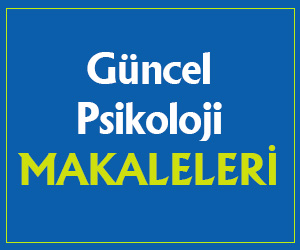


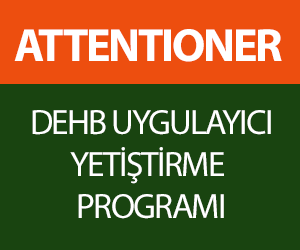
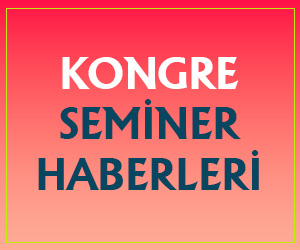
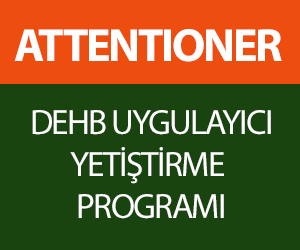
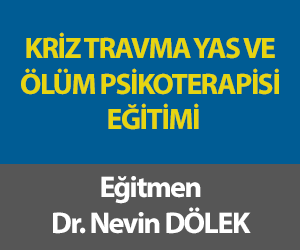
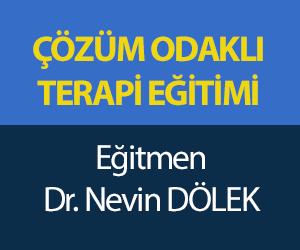
Türkçe karakter kullanılmayan ve büyük harflerle yazılmış yorumlar onaylanmamaktadır.